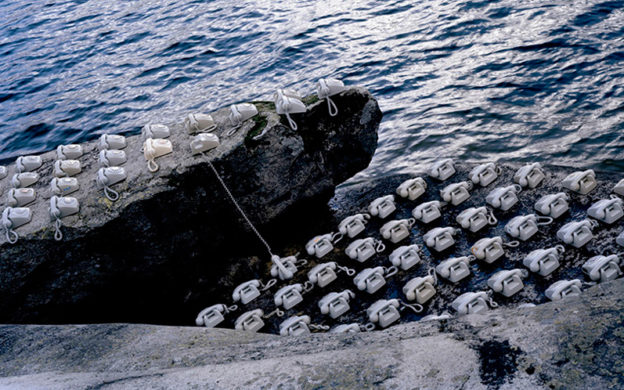Rune Guneriussen is a Norwegian conceptual artist whose work defies definition, walking between photography, sculpture, and installation. According to the artist, viewers see photography as the primary medium of his works but in the process, it is secondary. The artist refuses to be part of the technological revolution that separates humans from nature, from their genuine state of being; instead, nature is the cornerstone of Rune’s artistic process. By juxtaposing different objects in various locations, the artist freezes time and writes his own story. There are no humans in Rune’s installations. By excluding people from the scenes, the artist has found an alternative way of interacting with nature and its landscapes. The dialogue between the two is intimate and pure, and the results are magical.
We sat down with Norwegian artist Rune Guneriussen to learn more about his installations, process and inspiration:
When did you start working as an artist? What’s your background?
When does it start or stop? I truly believe it starts when one is young but I don’t come from an artistic family or a local community where art stood strong. So when I was a child, art seemed like something strange and distant but at the same time, I felt a strong relationship to the creative world. I first started releasing my creative interests through photography. In the beginning, it was just a technical exercise. I used to stage scenes in nature when I was just 14 years old. Later my interest evolved; I started working as a photojournalist and did that for a few years. It was kind of a sidetrack in my life, but also a great experience that forced me to find quick solutions. It helps me in my work today, even though I am a strong believer in dilatoriness. My true artistic practice started after studies in England. Actually, those years were the period I photographed the least.
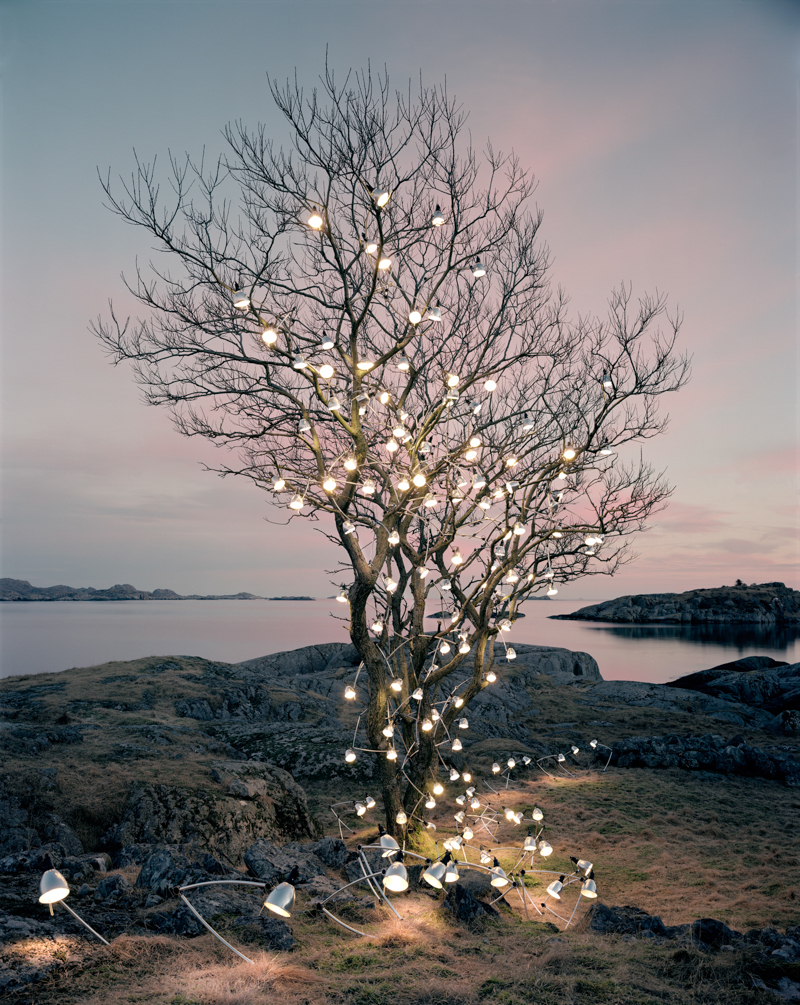 |
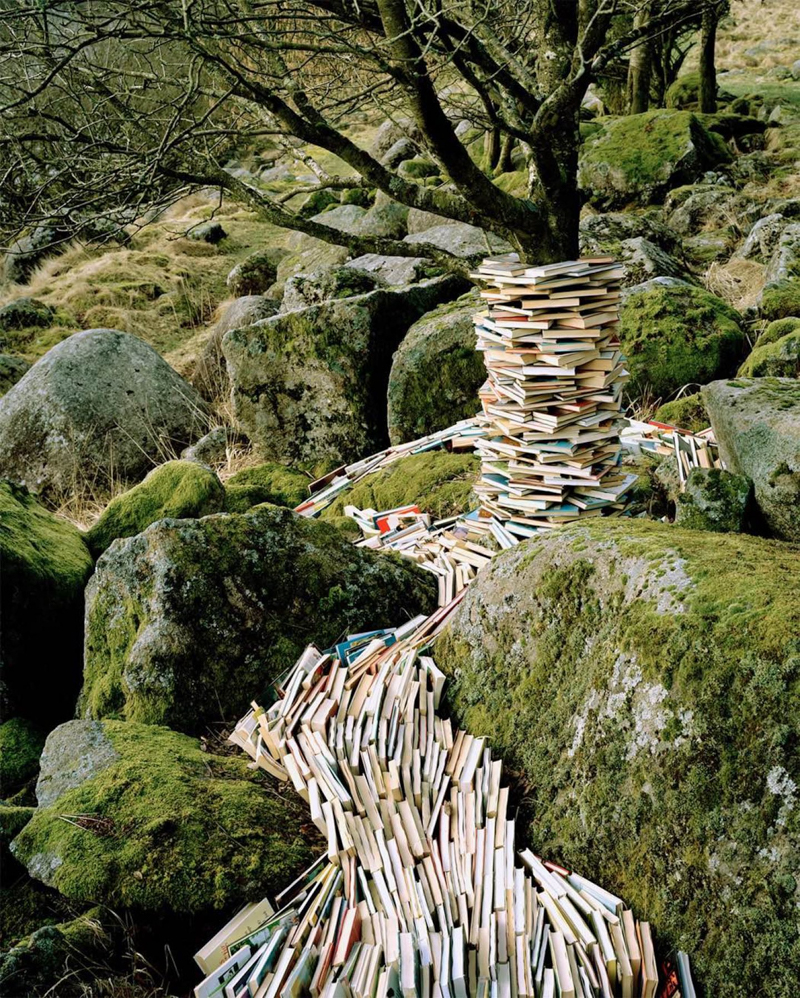 |
You play between installations, sculpture, and photography. Why did you choose these particular mediums?
Every artist chooses their process, and for me photography is secondary. Many see it as the primary medium of my work, but in the process it is definitely secondary. It is a mere evidence of what I make. I have traveled a lot scouting for locations, and this is the true basis for my work. It is all about finding small or large fractions of nature that I can work together with, bring back to the studio and develop. Then I can travel back with a concrete solution for how to solve that specific sculpture and start interacting with nature in a respectful way. That’s when the magic happens.
If I am in true connection with the environment in which I am creating, I can make something great. If the opposite happens it can be truly horrible. It is all about the artistic practice, and both results are interesting.
Who or what inspires your work?
I am a bit restrictive about giving specific names. I spend a lot of time digesting art through my travels, by visiting cities, meeting fellow artists and so on. It is more about sensing the current emotion of the world, status quo, state of mankind and the state of nature at the current time. This has the greatest impact on my work in relation to my own emotional state of mind.
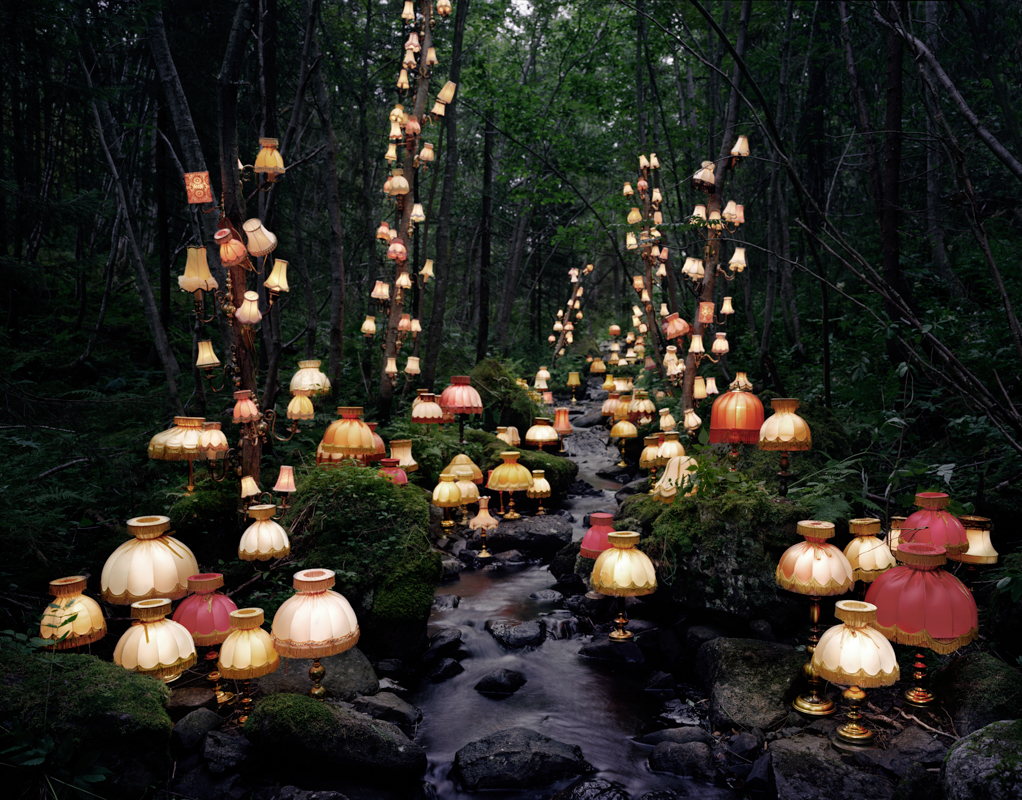
What role does nature play in your life and work?
Ever since childhood nature has been a big part of my life through observing it, living in it, and most importantly, by keeping the feeling of being part of it. I have stated this many times. I feel that many people have drifted away from the connection with nature. People started losing the understanding of how important nature is to their own survival – despite tech revolutions. I refuse to be a part of this development. I will fight to be part of nature.
In your installations, objects create the narrative. What is special about these objects and how do you choose them?
The objects were either found by me, the objects found me, or they were given to me. I have tried many, but these ones communicate a story that stays with me. Some of them are of course symbolically charged, and some are more diffuse. It is more about how they are used than what they present independently.
 |
 |
I really liked the titles of the images such as “Liberal version of present system,” “Quality of present interaction,” and “Don´t leave the lights on.” How do these sentences describe the state that we as humans are in today?
Titles are interesting. This has been a huge development over the years. At first, I didn’t put that much work into them. That is embarrassing since they are still part of my work. What triggers me the most about titles is the duality, the duality in conjunction with the work and with the words in themselves. Some titles even present my own state of mind, but then also of humans as a whole. The titles are my own abstract confusing way to lead into the work itself.
You never use people in your installations. Why so?
I want to take the physical aspect of actual humans out of the equation. In my work, I strive to also exclude human remnants. This has led to many of my works being intimate landscapes since the greater landscape is difficult to find without human interactions. It’s about keeping my work as an alternative way for us to interact with nature and its landscape.
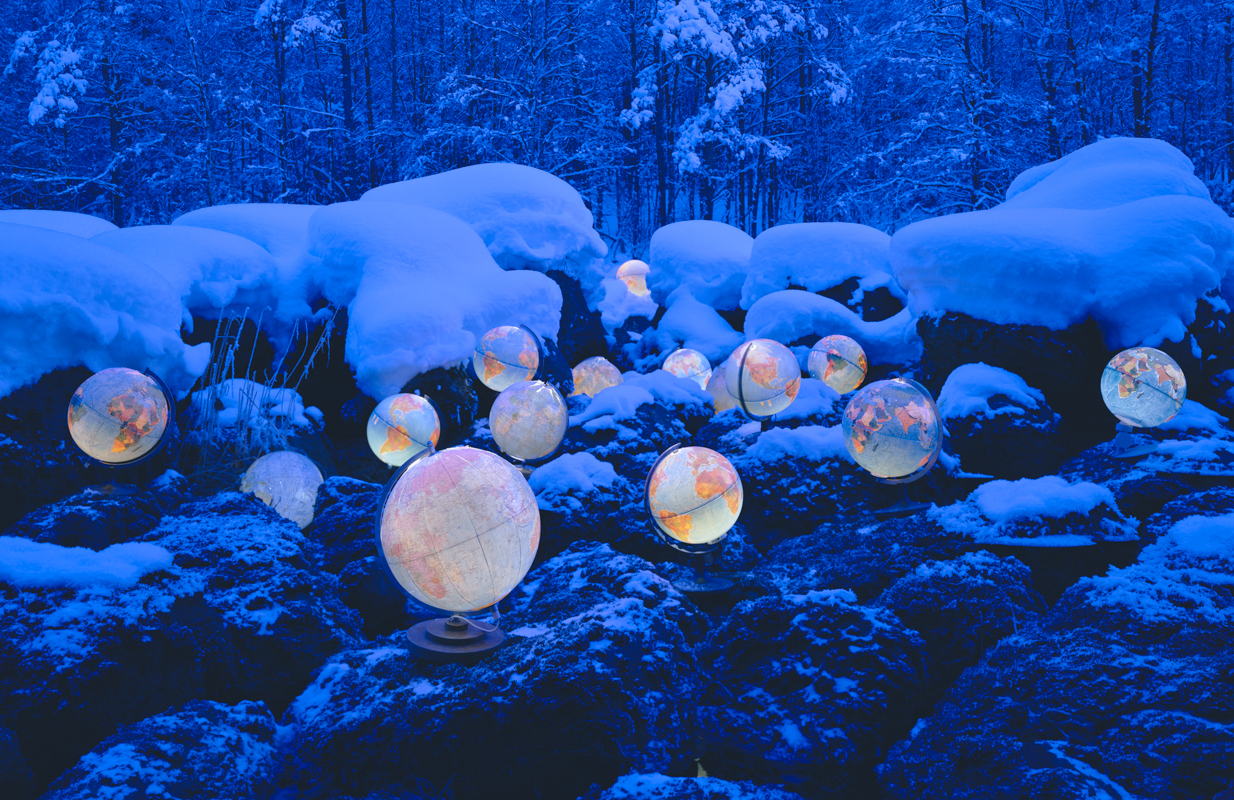 |
|
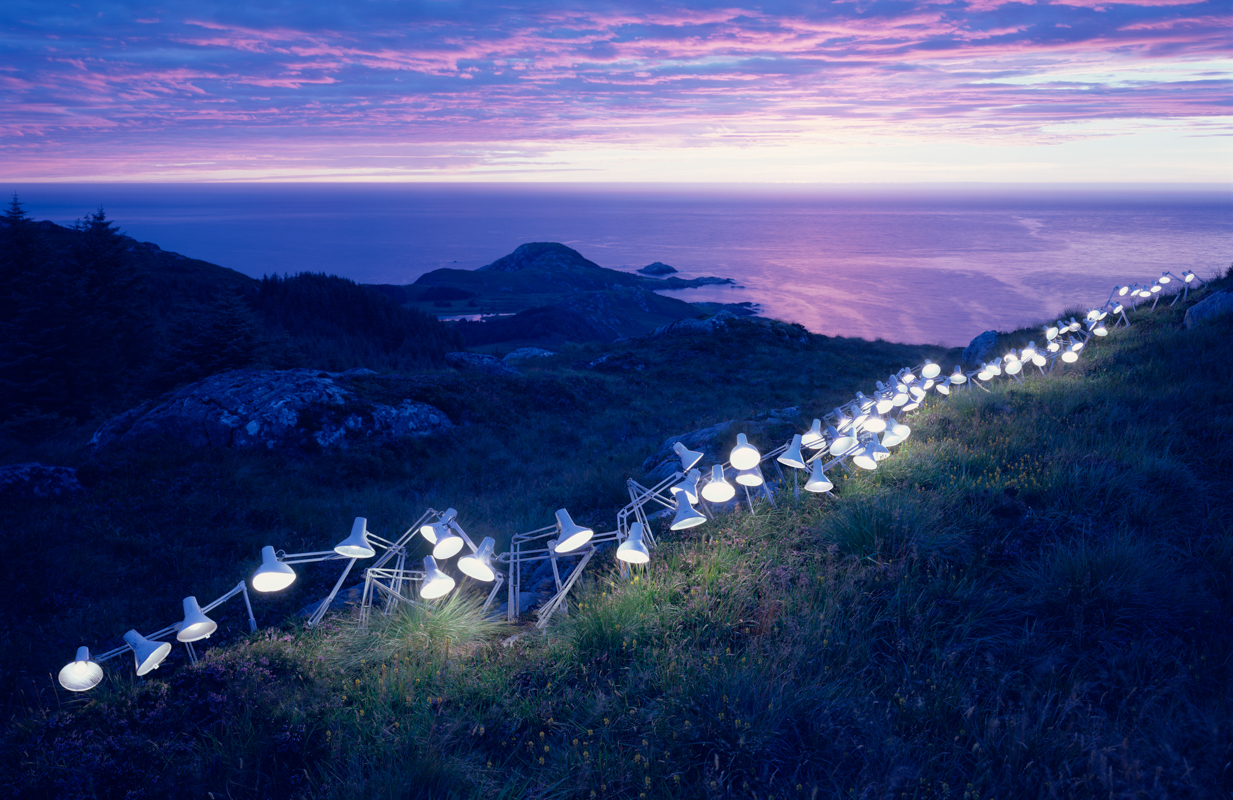 |
Except for direct visual representations, you leave a room for interpretation. Do you trigger viewers’ imaginations on purpose or you think it happens naturally?
I have never want to dictate a story. Even the word dictate explains the whole aspect. A dictated truth will never be owned by the receiver. It will only be understood when it is perceived and digested on its own by the receiver. The works have been accomplished in relation to the landscape, and not so much by me. This gives it a more open approach, or openness to interpretations if you will.
Do you feel your art is particularly Norwegian or Scandinavian? Is the current Norwegian art scene inclusive or hard to get into?
Nature has been important in artistic approach since the cave paintings. So I don’t think we can really attach this to a Scandinavian tradition. The Scandinavian tradition is often associated with melancholy, poetry and a subtle way of tenderness. I believe this can be seen as a part of my work. Nothing’s chosen, it’s only as a small extract of the mind. The Norwegian art scene is of course quite small, due to the small population, and that automatically makes it harder to get into. I have never focused much on Norway as a country to show my art so it is hard to tell.
Tell us about your latest work or an upcoming installation
Much of my existing work will still be exposed, but as an artist, I only want to progress in new works. So the upcoming years are still dedicated to nature as a workplace, but with a different approach to objects, material and functions.
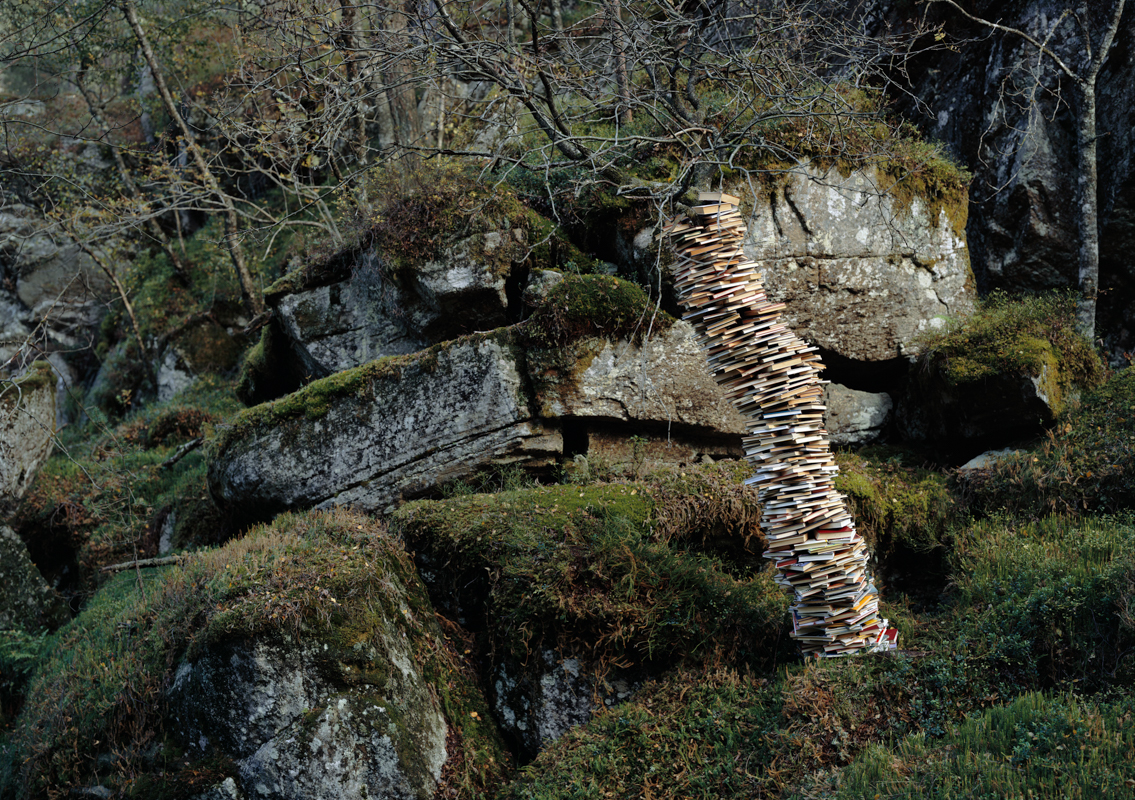
See more of Rune Guneriussen’s work here.

